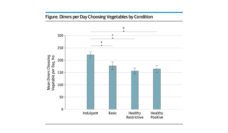Despite decades-long efforts to address childhood obesity in the United States, the most recent national data show that rates have continued to rise. Excess weight puts children at risk for short- and long-term health consequences including diabetes, heart disease, bone and joint problems, and psychosocial problems such as poor self-esteem, anxiety, and bullying and teasing. The persistence of the problem has led researchers to seek novel solutions and to intervene in more of the settings where children spend time. A growing body of evidence shows that summer break is a critical period for obesity prevention.
Though summer may call to mind long hours spent playing outdoors, freedom from the confinement of a school desk, and better availability of quality fruits and vegetables, evidence shows that school-age children gain weight more rapidly in the summer than during the school year. The most recent nationally-representative study of summer weight gain in early elementary school children showed that obesity rates increased during the summer months but not the school year. Recent findings from our team in Massachusetts suggest that the problem persists in the later elementary years, as well.
Researchers are concerned that the summer break may contribute to health disparities. Black and Hispanic children and those who are overweight or obese may be especially at risk for accelerated summer weight gain. Further, summer break may propagate an income-based child “health gap” that mirrors the well-documented academic achievement gap.
More work is needed to clarify the causes of rapid summer weight gain, develop strategies to prevent it, and ensure that children return to school each fall just as healthy (or healthier) than when they left.
Efforts are underway to understand the differences between school year and summer that contribute to rapid summer weight gain. Several studies show poorer physical activity patterns and losses in cardiorespiratory fitness over the summer. Our study of elementary school children in Massachusetts showed that children engaged in 8 fewer minutes of moderate-to-vigorous physical activity and nearly 28 more minutes of sedentary behavior each day in the summer than during the school year. Another recent study found that children engaged in twice as much screen time during the summer as they did during the school year. Diet quality also appears to poorer in the summer. Recent studies have shown decreased fruit and vegetable intake and more frequent consumption of sugary foods. Taken together, these findings suggest that no one factor is to blame for summer weight gain, but that many obesity-promoting behaviors are at play.
Lack of structured time during the summer months is thought to play a role in these behavioral differences. For example, unstructured summer days may enable more time for screen use and other sedentary activities, reduce access to physical activity programming, increase opportunities to snack, and disrupt sleep schedules. As such, increasing access to free and low-cost summer programs that can impart structure, provide a venue for physical activity, and ensure access to healthy meals is a priority.
One promising strategy is to expand and promote the USDA Summer Food Service Program, which can ensure that children have access to balanced meals when school is not in session. Summer meal sites provide a unique venue to engage at-risk children in physical activity, nutrition education, and academics during summer break. This can be especially important for families who are unable to afford to send their children to high-cost summer camps.
At home, parents can support a healthy summer by maintaining structured bedtimes, limiting screen time, and ensuring children get at least an hour of moderate to vigorous physical activity each day. Incorporating nutrient-dense foods such as fresh fruits and vegetables into family meals and limiting sugary beverage consumption are other ways parents can support their child’s health over the summer.
More work is needed to clarify the causes of rapid summer weight gain, develop strategies to prevent it, and ensure that children return to school each fall just as healthy (or healthier) than when they left.
Photo by Patrick Fore on Unsplash














